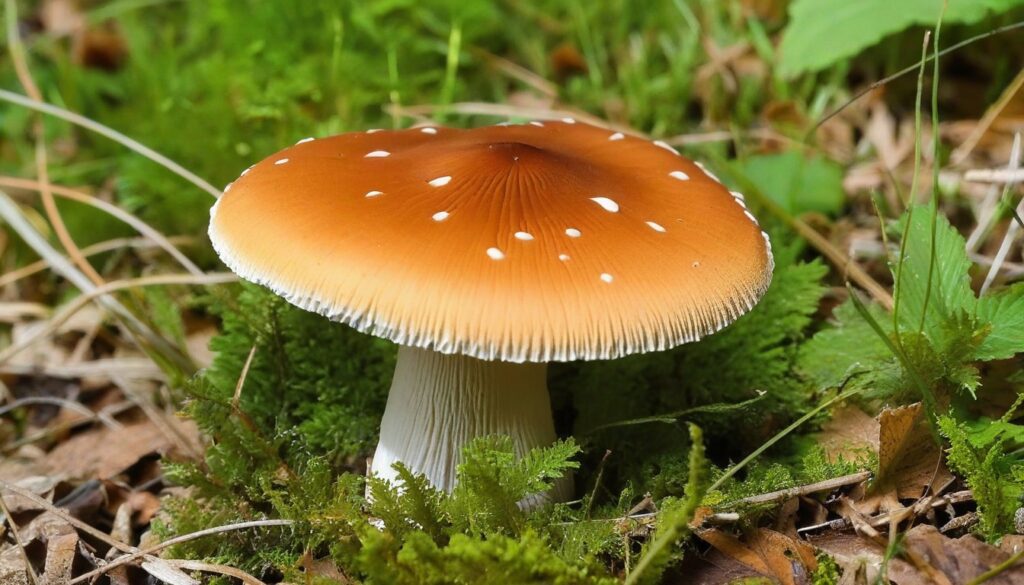Are you curious about the fascinating world of mushrooms? Kansas is home to a diverse range of common mushrooms that can be found throughout the state. With this field guide, you’ll be able to identify and learn about the different types of mushrooms that can be discovered in Kansas.
Key Takeaways:
- Explore the various types of common mushrooms found in Kansas
- Learn how to identify and differentiate between various species
- Understand the ecological importance of mushrooms in the Kansas ecosystem
- Discover the medicinal and traditional uses of certain species
- Obtain tips for safe and successful mushroom foraging in Kansas
The Morel Mushroom: A Prized Find in Kansas
If you’re a mushroom forager in Kansas, chances are you’re always on the hunt for the prized morel mushroom. Known for its unique shape and earthy flavor, the morel mushroom is a favorite among mushroom enthusiasts and chefs alike.
Characteristics: The morel mushroom is easily recognizable by its honeycomb-like cap and hollow stem. They typically range in size from 2-4 inches tall and can vary in color from tan to dark brown.
Habitat: Morel mushrooms can be found in a variety of habitats, including forests, woodlands, and grasslands. They are most commonly found in areas with moist soil and a combination of both dead and living vegetation.
Tips for Locating: Morel mushrooms typically grow in the spring, with the best harvesting times occurring after warm, wet weather. Look for areas with recently burned or disturbed soil, keeping an eye out for dead or decaying trees or areas with a mix of both grasses and trees.
There’s nothing quite like the thrill of finding a morel mushroom in the wild. Its unique flavor and texture make it a true delicacy in the world of culinary arts.”
If you’re lucky enough to find a cache of morel mushrooms, consider sautéing them in butter, incorporating them into a creamy pasta, or using them as a topping for your favorite pizza.
Edible Mushrooms in Kansas: A Guide to Safe Foraging
Foraging for edible mushrooms in Kansas can be a fun and rewarding activity, provided you can safely identify the mushrooms you encounter. Here is a guide to some of the most common edible mushrooms found in Kansas, along with tips on safe foraging practices.
Common Edible Mushrooms in Kansas
|
Mushroom Name |
Identification |
Habitat and Season |
Edibility |
|---|---|---|---|
|
Chanterelle |
Smooth and conical cap, yellow-orange color |
Woodlands, summer to fall |
Edible and delicious |
|
Morel |
Honeycomb-like cap, brownish color |
Forests, early to mid-spring |
Edible and sought-after |
|
Oyster |
Frilly fan shape, grayish-brown color |
Dead or dying trees, spring to fall |
Edible and savory |
|
Chicken of the Woods |
Shelf-like growth, bright yellow or orange color |
Dead or dying trees, summer to fall |
Edible and meaty |
It’s important to note that even with this list of common edible mushrooms in Kansas, misidentification can lead to serious illness or even death. Therefore, it’s essential to follow proper identification practices before consuming any mushroom you find in the wild. Always cross-reference with reputable identification sources and the advice of knowledgeable experts in the field.
Safe Foraging Practices
Before setting out foraging for mushrooms in Kansas, be sure to familiarize yourself with safe foraging practices. Here are some tips to ensure a safe and enjoyable experience:
- Research the location and season for specific mushrooms
- Wear appropriate clothing and footwear, and be prepared for inclement weather
- Always use a field guide or reputable resource for identification
- Avoid picking mushrooms growing near roads or in polluted areas
- Only pick mushrooms that are sufficiently mature and undamaged
- When in doubt, leave it out. If you’re not 100% sure the mushroom is safe to eat, don’t take the risk
By following these guidelines and exercising caution, you can safely forage for edible mushrooms in Kansas and enjoy the bounty of this fascinating natural world.
Poisonous Mushrooms in Kansas: Recognizing the Dangers
While foraging for mushrooms in Kansas can be an enjoyable activity, it’s important to be aware of the potentially deadly consequences of ingesting poisonous mushrooms. There are several species of poisonous mushrooms that can be found in the state, but some are more common than others.
Common Poisonous Mushrooms in Kansas
|
Mushroom Name |
Description |
Toxicity |
|---|---|---|
|
Death Cap (Amanita phalloides) |
White mushroom with a cap that can range from greenish to yellowish brown. |
Deadly |
|
Fool’s Mushroom (Amanita verna) |
A white, unremarkable looking mushroom with a smooth cap. |
Deadly |
|
Galerina (Galerina marginata) |
A small mushroom with a brownish-gray cap that is often slimy. |
Deadly |
|
Little Brown Mushroom (LBMs) |
A group of small, brown mushrooms that can be difficult to identify with certainty. |
Varies (some can be deadly) |
It’s important to note that these are just a few examples of the poisonous mushrooms that can be found in Kansas. If you are unsure if a mushroom is safe to eat, it’s best to err on the side of caution and avoid consumption.
Recognizing and Avoiding Poisonous Mushrooms
When foraging for mushrooms, it’s crucial to be able to distinguish between poisonous and non-poisonous species. Here are some tips to help:
- Study pictures and descriptions of poisonous mushrooms to help with identification.
- Don’t rely solely on color or appearance to determine safety; many poisonous mushrooms resemble non-poisonous varieties.
- Never eat a mushroom unless you are 100% sure of its identification.
- If in doubt, throw it out.
By following these precautions and paying close attention to the mushrooms you come across while foraging, you can help avoid the dangers associated with consuming poisonous mushrooms in Kansas.
Medicinal Mushrooms: Potential Health Benefits in Kansas
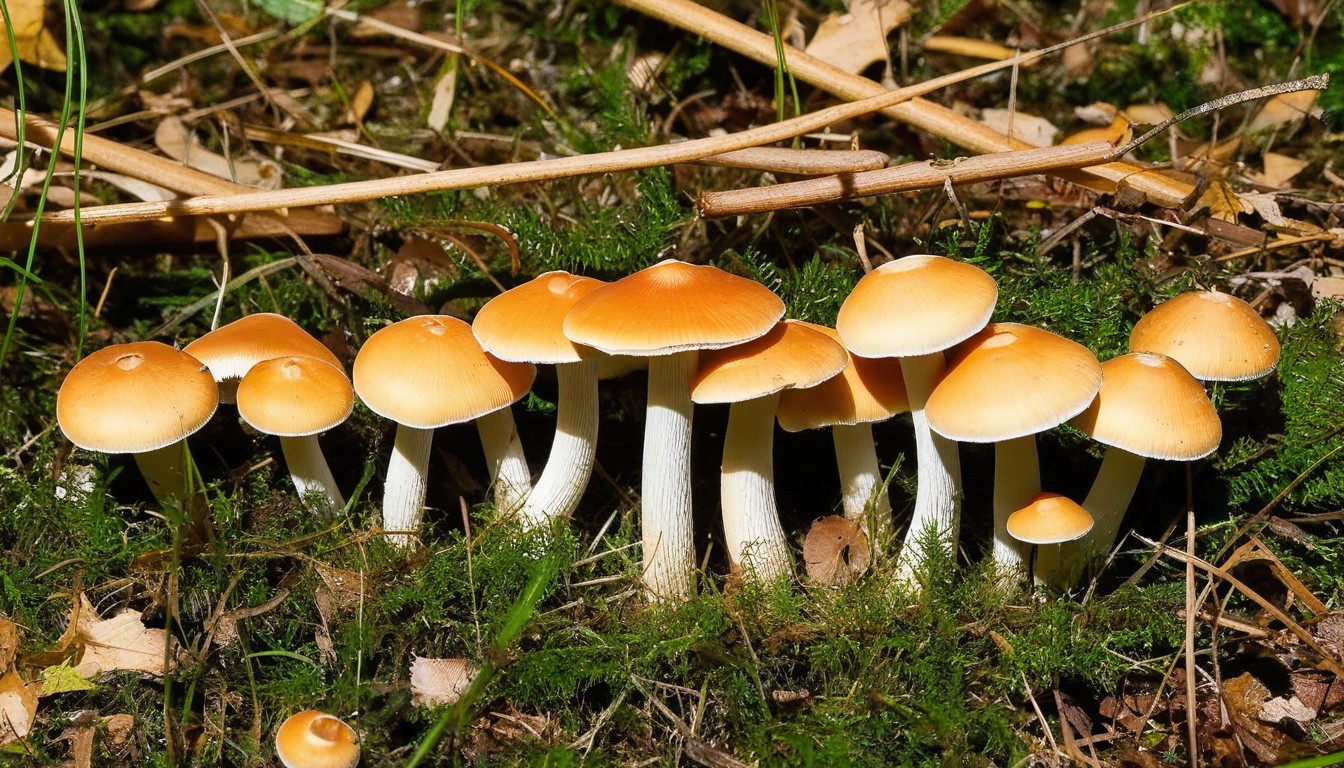
Beyond their culinary uses, certain mushrooms found in Kansas have been traditionally used for their medicinal properties. From boosting immunity to reducing inflammation, these mushrooms have a myriad of potential health benefits. Here are some of the most notable:
|
Mushroom |
Health Benefit |
|---|---|
|
Reishi |
Stress reduction, immune system support, improved sleep quality |
|
Chaga |
Antioxidant properties, immune system support, reduced inflammation |
|
Cordyceps |
Increased physical endurance, improved respiratory function, anti-inflammatory effects |
Other mushrooms like lion’s mane, turkey tail and shiitake also offer potential health benefits such as supporting brain function, fighting cancer and improving heart health.
While these uses may have roots in ancient medicine, it’s important to remember that scientific research is ongoing. If you’re considering using these mushrooms for their potential health benefits, it’s best to speak with a healthcare professional first.
Historic Use of Mushrooms in Kansas: Native American Traditions
Mushrooms have been utilized by Native American tribes in Kansas for medicinal, culinary, and spiritual purposes for centuries. These tribes have utilized their knowledge of local flora to harvest mushrooms with healing properties and are an integral part of traditional healing practices.
One of the most significant and widely used mushrooms among Native American tribes in Kansas is the Ganoderma applanatum mushroom. Also known as the Artist’s fungus, it has been used for its potent anti-inflammatory and anti-tumor properties in traditional medicine. The Polyporus umbellatus mushroom has been used by native tribes to treat urinary tract and kidney infections, and as a diuretic.
In addition to their medicinal use, mushrooms have played a vital role in Native American cuisine and spirituality. The Lentinula edodes, also known as Shiitake, was used in various dishes and believed to enhance fertility for women. The Pleurotus ostreatus, or oyster mushroom, was revered by some tribes as a symbol of good luck and prosperity.
“Our ancestors have passed down to us the knowledge of using mushrooms for food and medicine. We still use mushrooms to this day to heal the body and the spirit.”
The cultural significance of mushrooms among Native American tribes in Kansas is evident in various ceremonies and rituals. The Amanita muscaria mushroom, known as the fly agaric, is used in certain religious practices by tribes such as the Kiowa and Apache. It was believed to have hallucinogenic properties and was used by shamans to enter a state of trance and connect with the spiritual world.
|
Mushroom Type |
Use |
|---|---|
|
Ganoderma applanatum |
Anti-inflammatory, anti-tumor properties |
|
Polyporus umbellatus |
Treatment for urinary tract and kidney infections, diuretic |
|
Lentinula edodes |
Used in cooking, believed to enhance fertility in women |
|
Pleurotus ostreatus |
Revered as a symbol of good luck and prosperity |
|
Amanita muscaria |
Used in religious practices for its hallucinogenic properties |
The historic use of mushrooms among Native American tribes in Kansas highlights the importance of understanding and respecting the cultural significance of these fungi. As enthusiasts and foragers continue to explore the fungal world, it’s essential to recognize and honor the diverse roles mushrooms play in different cultures and traditions.
Unique and Rare Mushrooms in Kansas: Hidden Gems
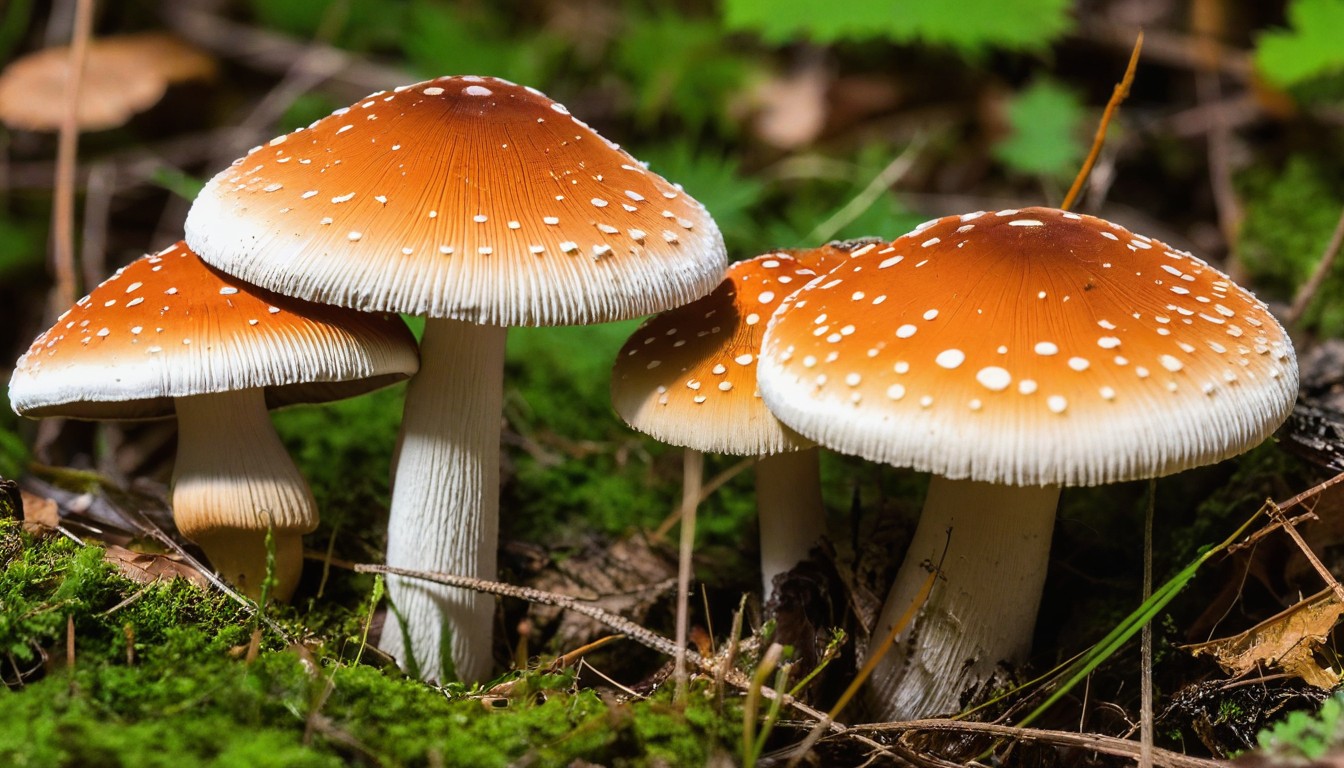
Kansas boasts some of the most unique and rare mushrooms in the United States. These hidden gems are often overlooked but should be explored by foragers and enthusiasts alike. Below, we showcase some of the most exceptional varieties found in the state.
Lions Mane Mushroom
The Lions Mane Mushroom is a rare edible mushroom with a strikingly beautiful appearance. It is covered with thick, white spines and can be found growing on logs in wooded areas. The taste and texture of cooked Lions Mane is often compared to seafood, making it a popular choice for vegetarian dishes or seafood alternatives.
Enoki Mushroom
The Enoki Mushroom is a unique and visually appealing fungus with slender, elongated stems and small caps. They are often used in East Asian cuisine and are commonly found growing on dead hardwood trees in cooler areas. Enoki mushrooms have a light, delicate flavor and crunchy texture, making them perfect for salads and soups.
Birch Bolete Mushroom
The Birch Bolete Mushroom is a rare and delicious edible mushroom that can be found growing in the vicinity of birch trees. It has a brown cap with a velvety texture and a nutty, delicate flavor. These mushrooms can be eaten fresh or cooked and used in various dishes, making them a valuable find for foragers.
Glowing Mushroom
The Glowing Mushroom is a rare and fascinating variety that is found growing in the dark and damp corners of caves, abandoned mines, and basements. These mushrooms emit a pale greenish glow, creating an otherworldly and enchanting atmosphere. While they are not edible, they are a wonder to behold and an exciting find for mushroom enthusiasts.
These unique and rare mushrooms found in Kansas are just a few examples of the hidden gems that await those who venture out and explore the state’s fungal world.
Mushrooms and the Ecosystem: Their Ecological Importance in Kansas
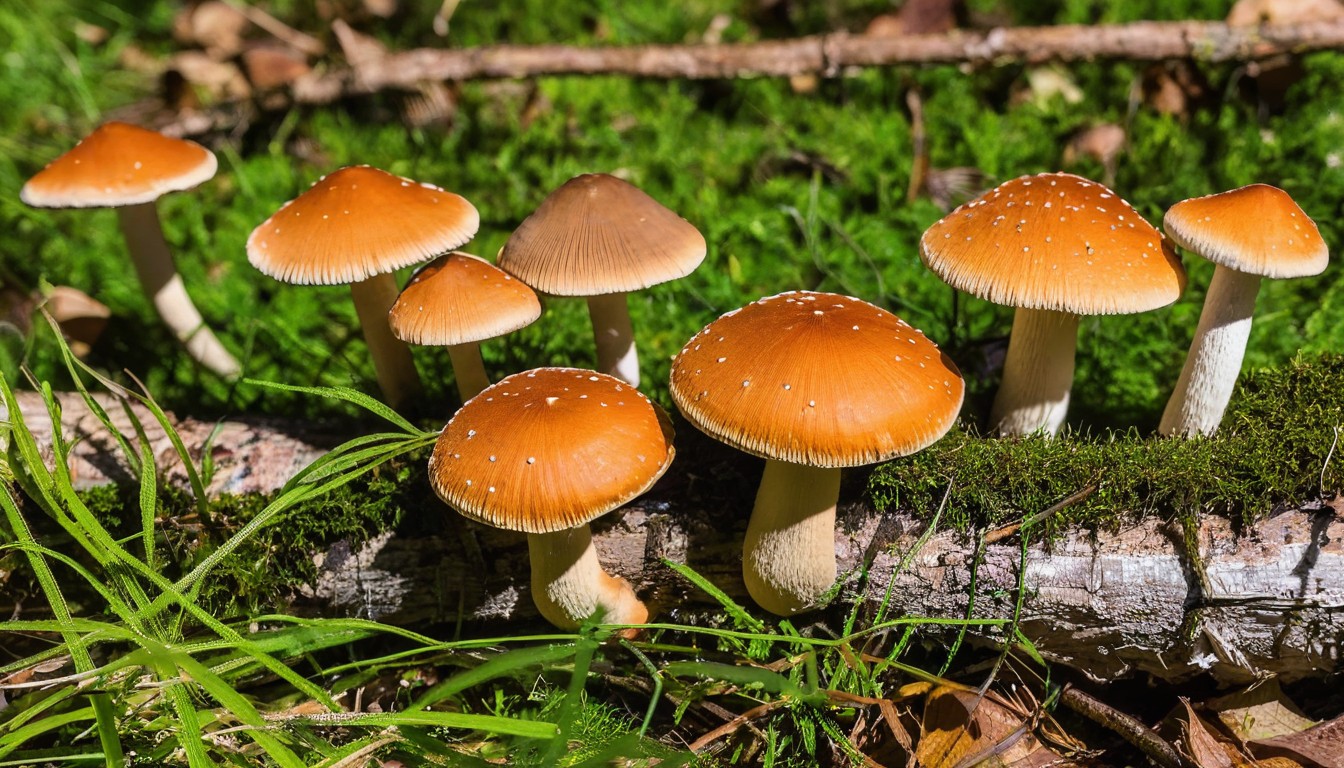
Mushrooms play a vital role in maintaining the health and balance of the Kansas ecosystem. These fascinating fungi contribute to soil health by breaking down organic matter and returning essential nutrients to the earth. They also participate in nutrient cycling, transferring nutrients between plants and soil bacteria, which is crucial to maintaining the overall health of the ecosystem.
Furthermore, mushrooms act as decomposers, breaking down dead organisms and converting them into usable nutrients for the ecosystem. Without mushrooms, the natural process of decomposition would be slowed or even halted, disrupting the balance of the environment.
Besides their crucial role in the ecosystem, mushrooms also have medicinal properties that have been utilized for centuries in traditional medicine. Research has shown that some species of mushrooms have immune-boosting, anti-inflammatory, and even anti-cancer properties, making them important resources for human health.
|
Mushroom Function |
Contribution |
|---|---|
|
Soil health |
Breaking down organic matter and returning essential nutrients to the earth |
|
Nutrient cycling |
Transferring nutrients between plants and soil bacteria, crucial to maintaining ecosystem health |
|
Decomposition |
Breaking down dead organisms and converting them into usable nutrients for the ecosystem |
|
Medicinal Properties |
Immune-boosting, anti-inflammatory, and anti-cancer properties used in traditional medicine |
The ecological importance of mushrooms cannot be overstated. By promoting soil health and nutrient cycling, while also contributing to the natural process of decomposition, they have a direct impact on the health and sustainability of the Kansas ecosystem.
Tips for Mushroom Hunting in Kansas: Best Practices and Equipment
If you’re planning to go mushroom hunting in Kansas, following best practices and having the right equipment will make your experience safe and enjoyable. Consider these tips to enhance your foraging adventure:
- Do your research: Before going mushroom hunting, research the types of mushrooms that grow in the area, their seasonality, and other identifying characteristics. It’s crucial to be able to distinguish edible from poisonous mushrooms.
- Find a suitable location: Consider public land, such as state parks and national forests, or obtain permission from private landowners to hunt for mushrooms. Be respectful of the environment and don’t trespass.
- Bring essential equipment: At a minimum, you’ll need a foraging basket, a small knife for harvesting, gloves, and protective clothing. Other equipment to consider includes GPS, a compass, a field guide, and a camera.
- Hunt with a partner: For safety reasons, it’s always best to hunt mushrooms with a partner. This will also make the experience more enjoyable, as you can share your discoveries and knowledge.
- Leave no trace: Avoid damaging or disrupting the environment by harvesting only what you need, leaving some for others and the ecosystem. Don’t disturb the natural habitat or remove any wildlife.
- Practice food safety: Only consume mushrooms that you are certain are safe to eat. Cook them thoroughly and avoid eating large amounts in one sitting, especially if you’re trying a new variety.
By following these best practices and having the right equipment, you can enjoy a safe and memorable mushroom hunting experience in the beautiful state of Kansas.
Local Mushroom Festivals and Events in Kansas: Celebrating Fungi
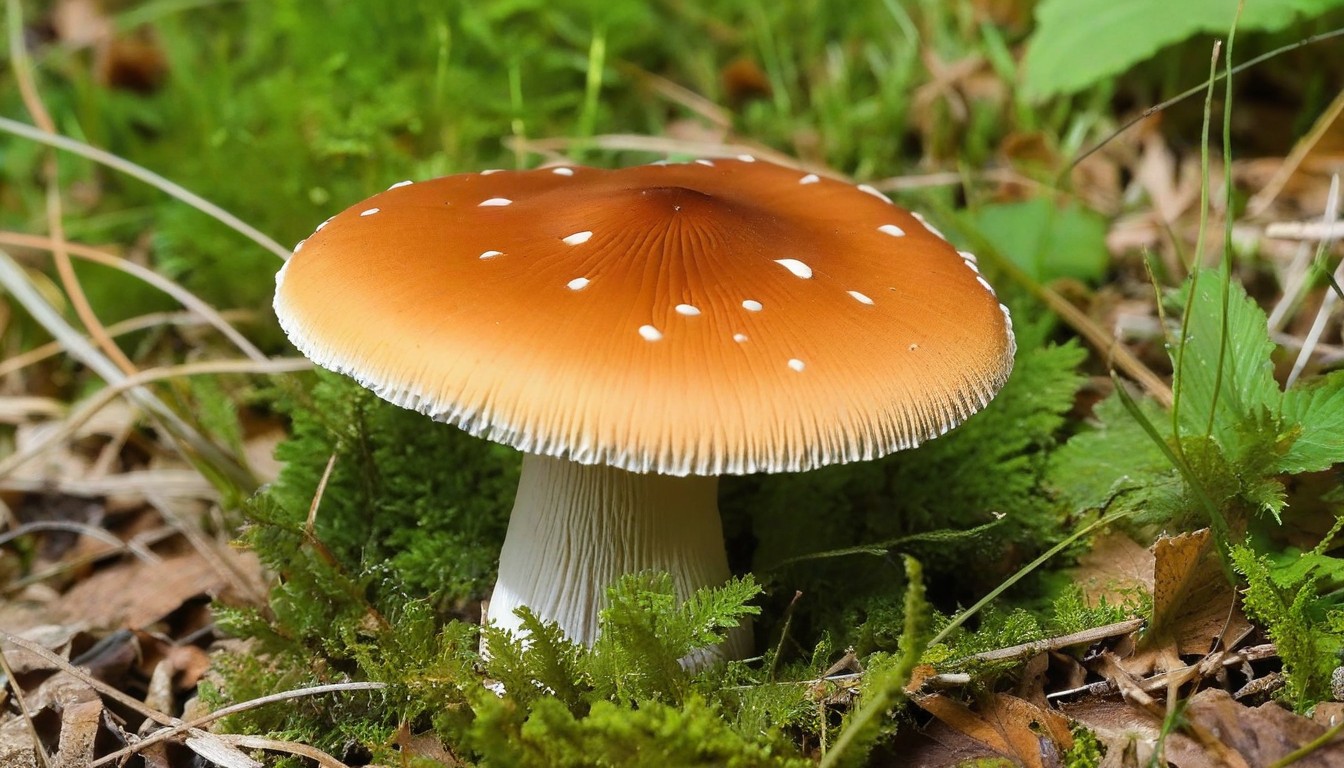
Kansas is home to a plethora of mushroom festivals and events, offering fun-filled opportunities to explore and celebrate the wonderful world of fungi. These events provide a chance for enthusiasts and foragers to gather, share knowledge, and indulge in delicious mushroom dishes. Here are some of the prominent mushroom festivals and events in Kansas:
|
Festival/Event Name |
Date & Location |
Activities |
|---|---|---|
|
Annual Morel Mushroom Festival |
April – Blue Rapids |
Morel hunting competition, mushroom tasting, live music |
|
Kansas Mushroom Festival |
September – Bowie |
Foraging workshops, guest speakers, vendor fair |
|
Junction City Mushroom Festival |
August – Junction City |
Mushroom sales, cooking demonstrations, kids activities |
Whether you’re a seasoned forager or just getting started, these festivals and events offer an exciting way to engage with Kansas’ mushroom community. Don’t miss out on the chance to celebrate the many wonders of fungi!
Conclusion
Kansas boasts an array of mushrooms that are waiting to be discovered. With this field guide, you can now easily identify the common & unique mushrooms, some of which have medicinal benefits that have been used for centuries, like those used by Native Americans.
Whether you’re a seasoned forager or a novice enthusiast, remember to always follow safe foraging practices and keep an eye out for any poisonous varieties. With proper identification and foraging techniques, mushroom hunting can be both a rewarding and exciting experience.
Don’t forget to equip yourself with the right gear and attend one of the many local mushroom-related events and festivals held throughout the year. These events provide a great platform to learn more about Kansas’s fungi and meet like-minded people.
So, put on your hiking boots, grab your basket and head out to explore the fascinating world of mushrooms in Kansas!
FAQ
What is this field guide about?
This comprehensive field guide focuses on the various types of mushrooms commonly found in the state of Kansas, providing information to help you identify and learn more about these fascinating fungi.
What is the morel mushroom?
The morel mushroom is a highly sought-after mushroom in Kansas. This section explores its characteristics, habitat, and provides tips for locating these prized finds in the state.
Which mushrooms are safe to eat in Kansas?
For those interested in foraging for mushrooms in Kansas, this section provides a guide to the edible mushrooms found in the state, including tips on proper identification and safe foraging practices.
Are there poisonous mushrooms in Kansas?
Yes, Kansas is home to some poisonous mushrooms. This section highlights the common poisonous mushrooms in the state and provides information on how to recognize and avoid them.
What are the potential health benefits of mushrooms in Kansas?
Certain mushrooms in Kansas have been used for their potential health benefits for centuries. This section explores their medicinal properties and traditional uses in natural remedies.
How have mushrooms been used in Native American traditions in Kansas?
Mushrooms have played a significant role in the cultural and culinary traditions of Native American tribes in Kansas. This section delves into their historic uses among these indigenous communities and their significance.
Are there any unique and rare mushrooms in Kansas?
Yes, Kansas is home to a variety of unique and rare mushrooms. This section showcases some of these hidden gems, discussing their distinctive characteristics and where they can be found in the state.
What is the ecological importance of mushrooms in Kansas?
Mushrooms have a crucial role in the Kansas ecosystem, contributing to soil health, nutrient cycling, and the overall balance of the local environment. This section explores their ecological importance.
What are the tips for mushroom hunting in Kansas?
This section provides valuable tips on the best practices, essential equipment, and safety precautions for mushroom hunting in Kansas.
Are there any mushroom festivals and events in Kansas?
Yes, Kansas hosts various mushroom festivals and events throughout the year. This section highlights some of the prominent local events where mushroom enthusiasts can gather and share their passion.
What is the conclusion of this field guide?
In conclusion, Kansas is home to a diverse range of mushrooms with various culinary, medicinal, and ecological attributes. This field guide aims to enhance your appreciation for the fungal world in Kansas and provide you with valuable information to make informed decisions while exploring the wonders of its mushrooms.

